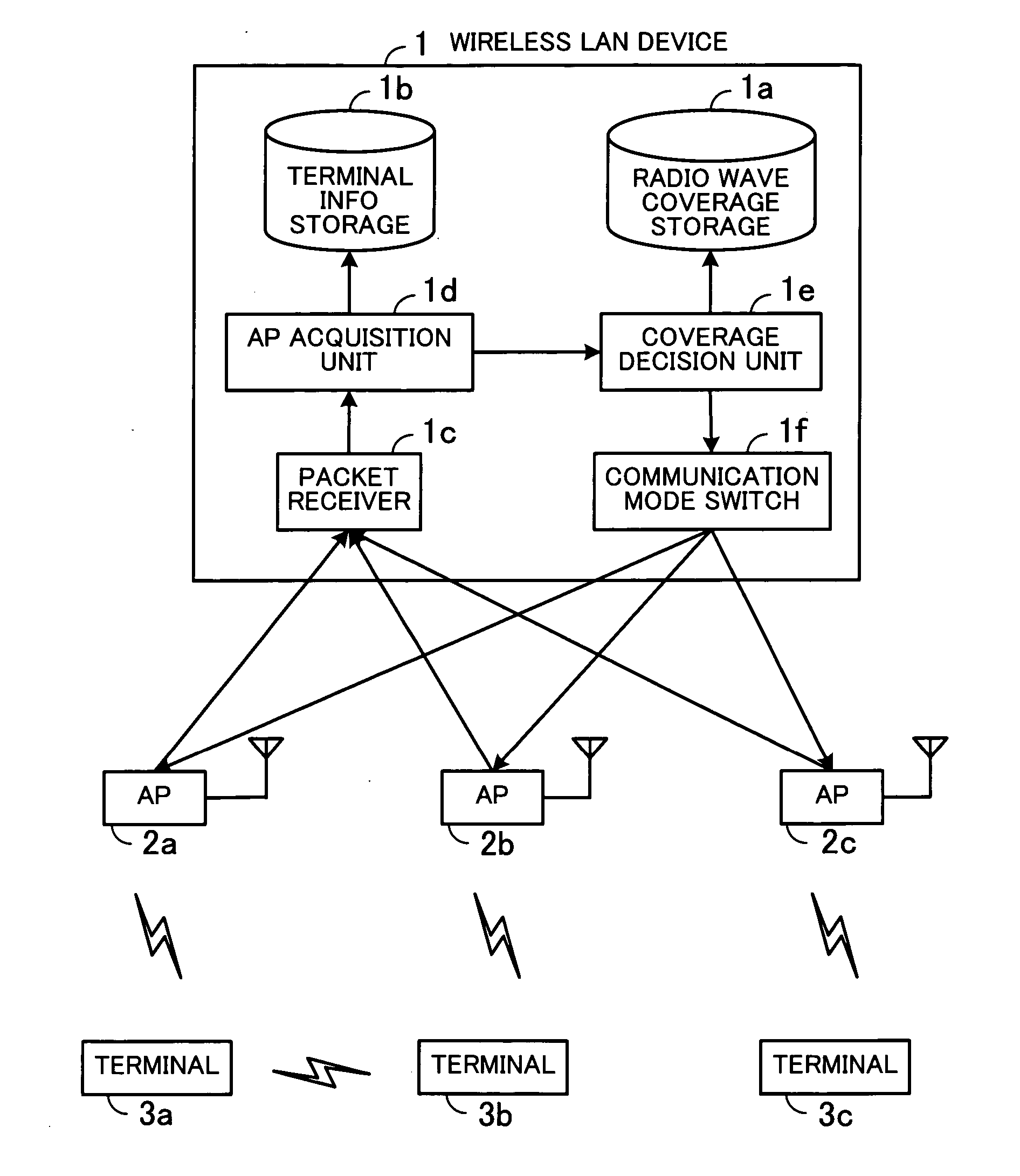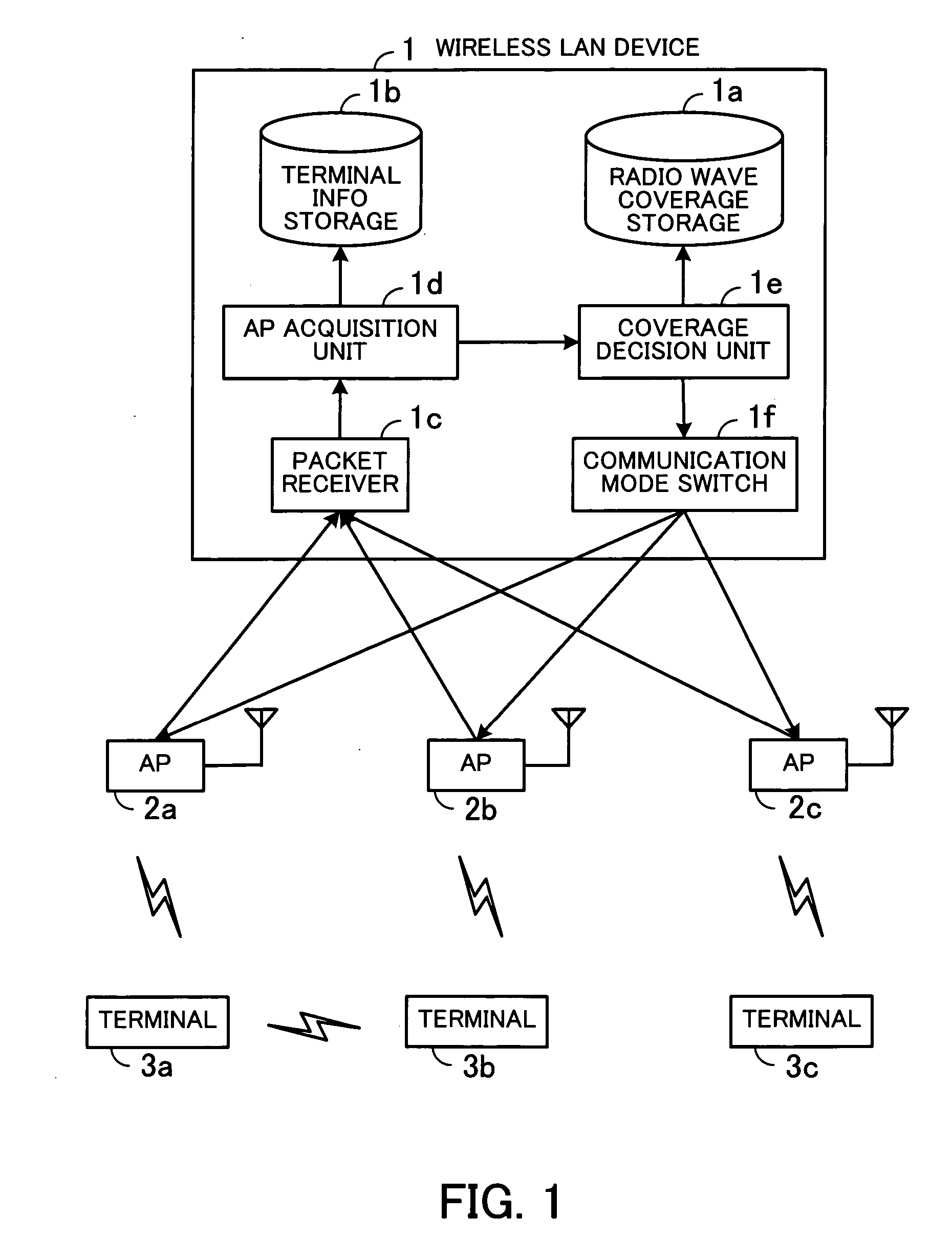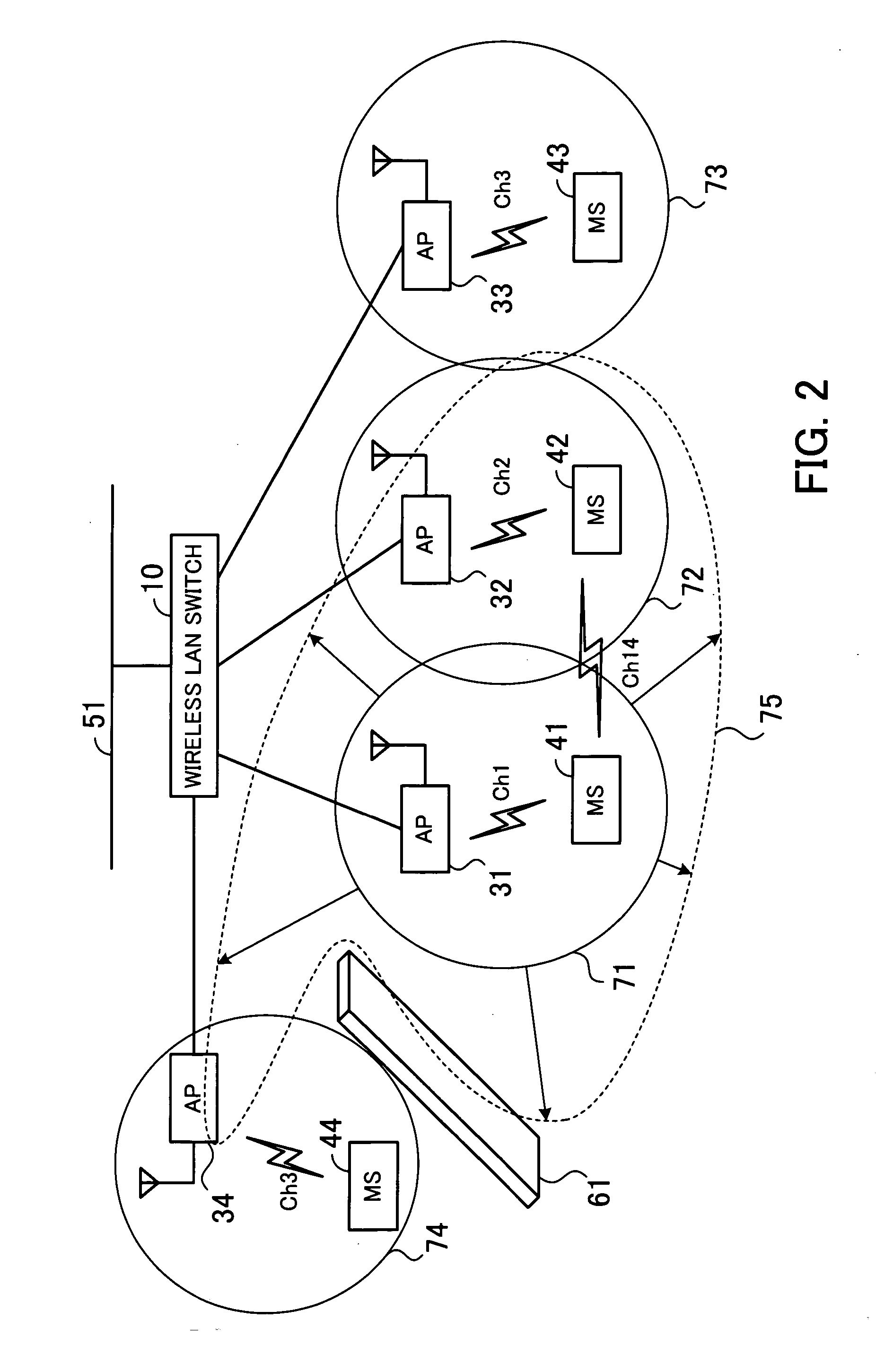Wireless LAN device and communication mode switching method
- Summary
- Abstract
- Description
- Claims
- Application Information
AI Technical Summary
Benefits of technology
Problems solved by technology
Method used
Image
Examples
first embodiment
[0062] the present invention will be now described in detail with reference to the drawings wherein the invention is applied to a wireless LAN switch as the wireless LAN device.
[0063]FIG. 2 shows an exemplary system configuration comprising the wireless LAN switch of the first embodiment, access points (APs), and mobile stations (MSs). As illustrated, the wireless LAN switch 10 is connected, for example, to a wired Ethernet backbone network 51. Also, the wireless LAN switch 10 is connected by wire with access points 31 to 34.
[0064] Let us suppose, for example, that the access point 31 and a mobile station 41 are communicating in infrastructure mode by using a channel Ch1, that the access point 32 and a mobile station 42 are communicating in infrastructure mode by using a channel Ch2, that the access point 33 and a mobile station 43 are communicating in infrastructure mode by using a channel Ch3, and that the access point 34 and a mobile station 44 are communicating in infrastructur...
second embodiment
[0142] the present invention will be now described in detail with reference to the drawings.
[0143] In the second embodiment, information about mobile stations that failed in ad-hoc communication is stored in an additionally provided communication failure list storage, and the mode of communication between such mobile stations is thereafter prevented from switching to ad-hoc mode. Thus, in operational environments where mobile stations are not frequently moved, failure in the switching to ad-hoc mode can be more effectively lessened.
[0144] Such operational environments where mobile stations are not frequently moved are conceivably created in offices, for example. Usually, employees work at their own desks by using notebook computers (mobile stations), and only when a meeting is held, the employees bring their notebook computers into a conference room. Namely, a mobile station is moved from the coverage of one access point to that of another, and once associated with a certain access...
third embodiment
[0157] the present invention will be now described in detail with reference to the drawings.
[0158] In the third embodiment, information about mobile stations which are not within each other's coverage of radio waves, among the mobile stations associated with an identical access point, is generated based on RTS / CTS frames which are exchanged during communication in infrastructure mode, and is stored in an additionally provided non-coverage storage. With respect to the mobile stations registered in the non-coverage storage, the first packet transmitted therefrom is not stored in the communication message storage 19, thereby saving the capacity of the communication message storage 19.
[0159]FIG. 14 shows an exemplary system configuration comprising a wireless LAN switch of the third embodiment, access points, and mobile stations. As illustrated, the wireless LAN switch 100 is connected, for example, to a wired Ethernet backbone network 132. Also, the wireless LAN switch 100 is connecte...
PUM
 Login to View More
Login to View More Abstract
Description
Claims
Application Information
 Login to View More
Login to View More - R&D
- Intellectual Property
- Life Sciences
- Materials
- Tech Scout
- Unparalleled Data Quality
- Higher Quality Content
- 60% Fewer Hallucinations
Browse by: Latest US Patents, China's latest patents, Technical Efficacy Thesaurus, Application Domain, Technology Topic, Popular Technical Reports.
© 2025 PatSnap. All rights reserved.Legal|Privacy policy|Modern Slavery Act Transparency Statement|Sitemap|About US| Contact US: help@patsnap.com



